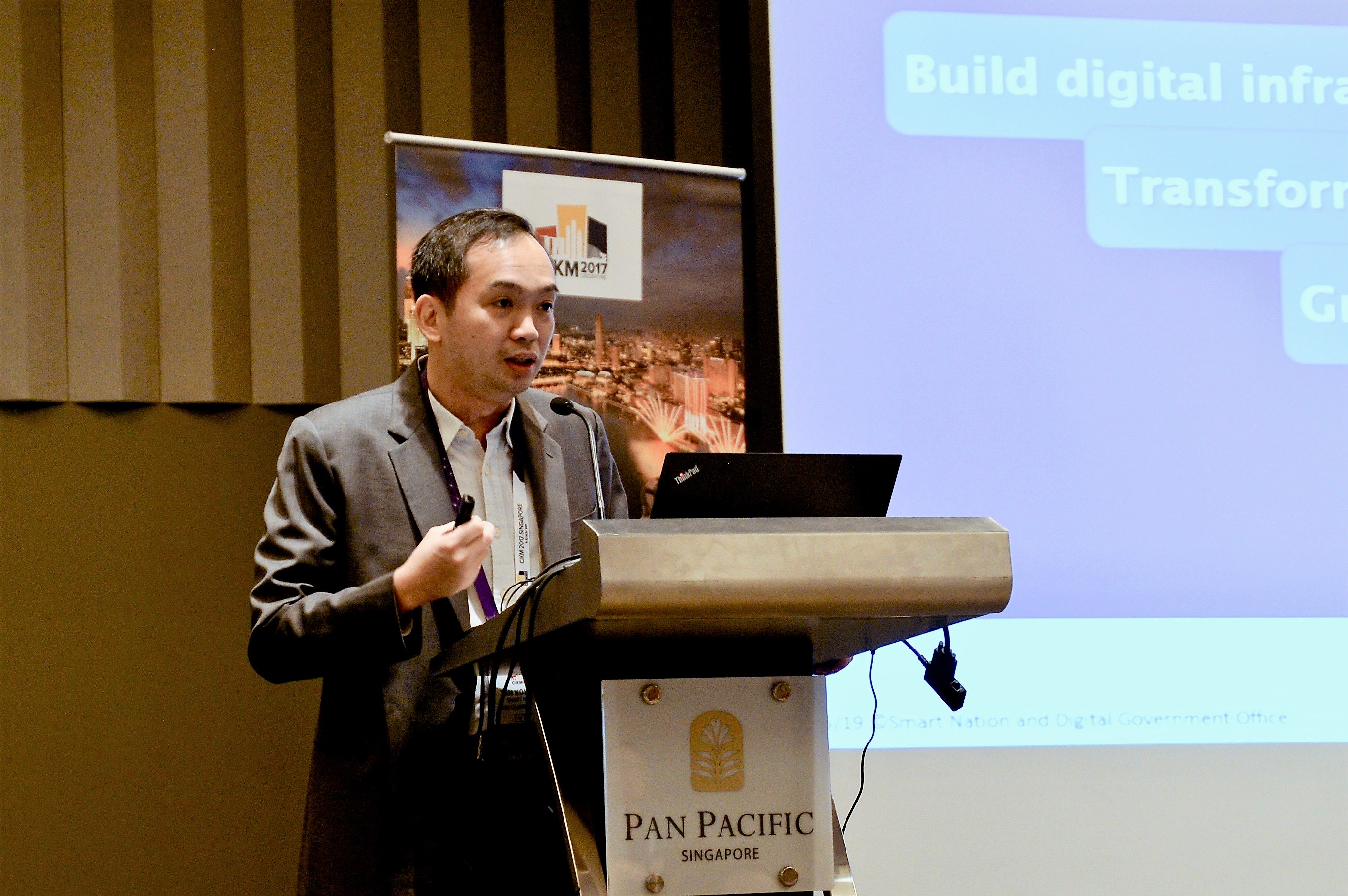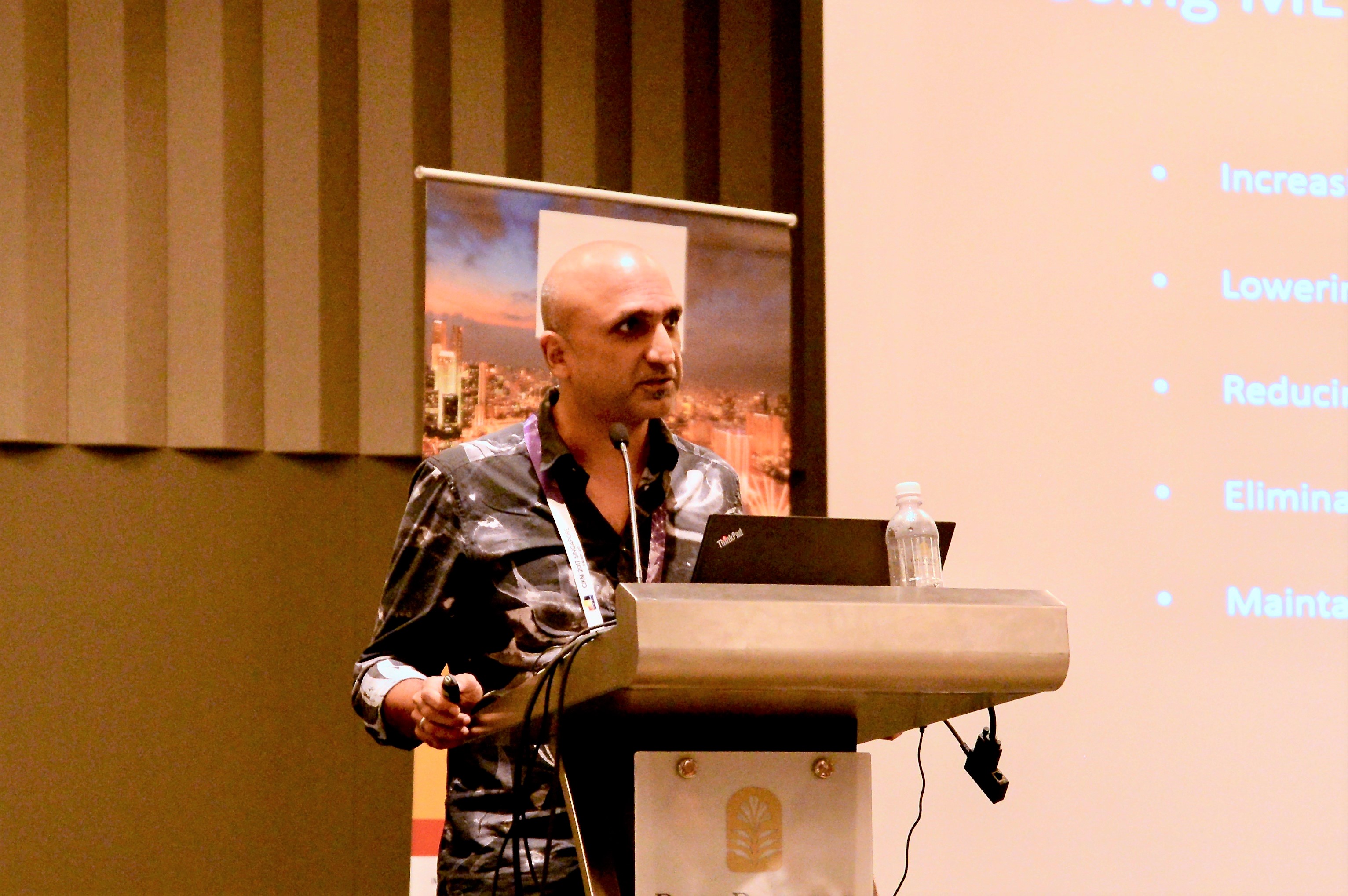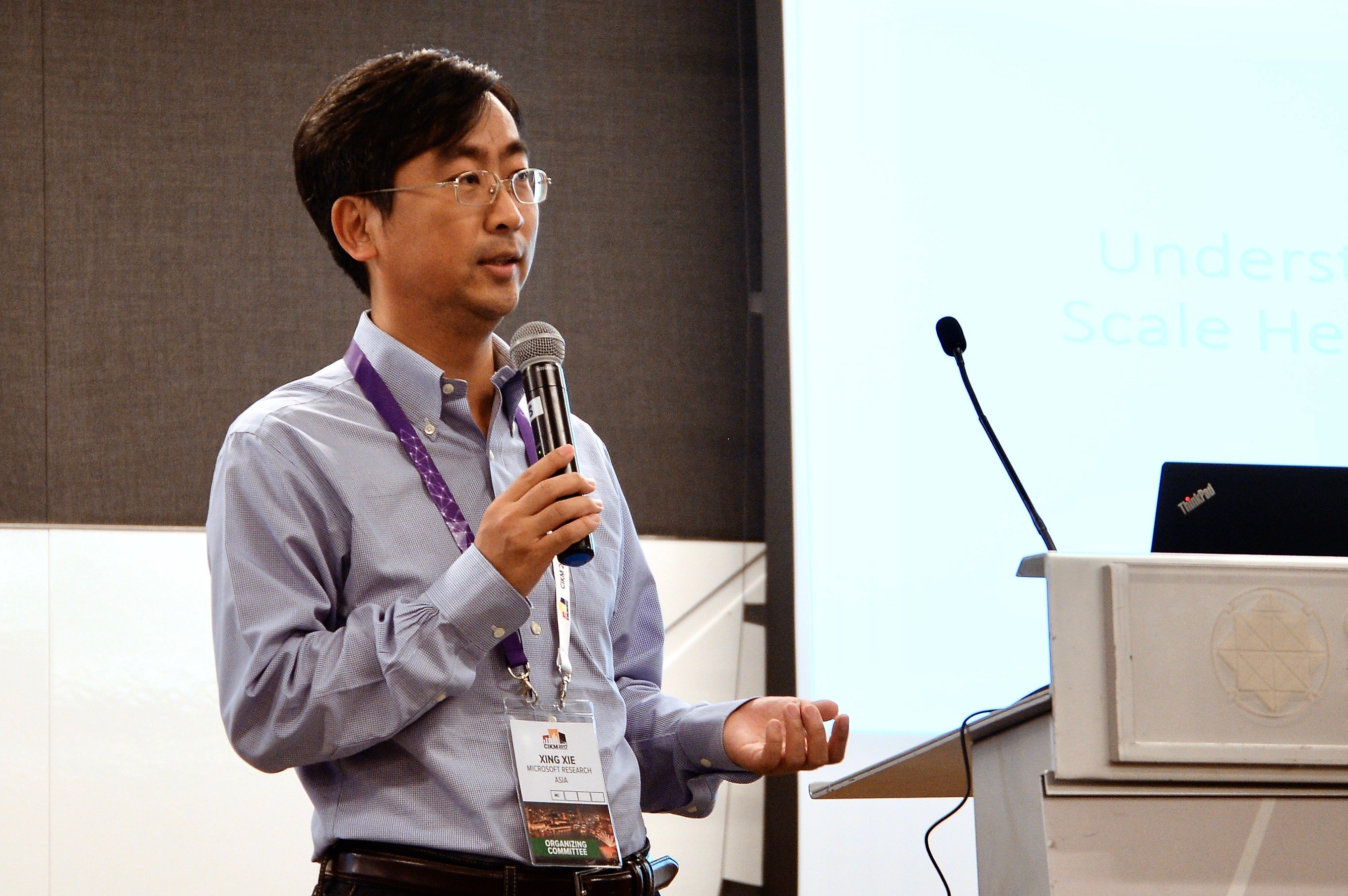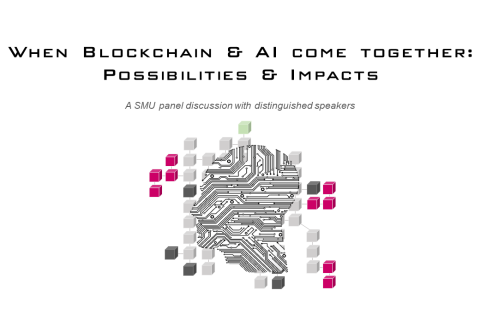By Sim Shuzhen
SMU Office of Research & Tech Transfer – Just a few decades ago, cities were chiefly concerned with building roads, bridges, homes and public utilities to keep up with the needs of their burgeoning populations. Today, on top of this physical layer, they are equally intent on installing the digital infrastructure that underpins modern urban life – the ‘bricks’ of today’s smart cities are high-speed wireless connectivity, sensor networks, electronic payment systems, trade platforms and the like.

Above: Mr Tan Kok Yam, deputy secretary of Singapore's Smart Nation and Digital Government Office (SNDGO)
Singapore is no exception to this wave of digitisation. “Our national response is to try and rally the whole nation to see how we can make the best use of the digital revolution,” said Mr Tan Kok Yam, deputy secretary of Singapore’s Smart Nation and Digital Government Office (SNDGO), in his opening address at the International Conference on Information and Knowledge Management (CIKM) 2017, held in Singapore from 6-10 November 2017.
“Taking full advantage of [the digital revolution] will bring new jobs and business opportunities, and make our economy more productive and our lives more convenient. At the end of the day, it’s about making Singapore an outstanding city to live, work and play in,” he said.
Reflecting the importance of urban digitisation, this year’s CIKM focused on technologies and insights around the theme of ‘Smart Cities, Smart Nations’. Singapore Management University’s (SMU) School of Information Systems and Living Analytics Research Centre (LARC) were among the co-organisers of the event, considered the world’s premier conference for researchers in the fields of knowledge management, data management and information retrieval.
Reinventing commerce for the digital age
The Singapore government is keen to collaborate with the research community, both in academia and the private sector, to develop new technologies and take advantage of their numerous possibilities, said Mr Tan.
“It’s not about inventing everything. For a small city-state, it’s about importing the best ideas and using Singapore as a test-bed to create solutions for other cities,” said Mr Tan.
In the digital economy, staying competitive indeed requires constant innovation; this is so even for technology giants like Amazon, said Dr Rajeev Rastogi, Amazon’s director of machine learning, who spoke after Mr Tan. With billions of products in its catalogue, the company generates vast amounts of data, to which it applies machine learning techniques to generate insights into customer needs.

Above: Dr Rajeev Rastogi, Amazon's director of machine learning
“Machine learning is enabling smart e-commerce, and within Amazon we use it extensively for forecasting product demand, recommending products, product search, online ads and numerous other applications,” Dr Rastogi said during his keynote speech.
For example, although each Amazon product page contains product specifications, reviews and discussions, this information is not necessarily easily accessible to customers. “The product pages of our top-sellers can contain about 4,000 words, and it can be difficult for users to find information, especially on smartphones,” he explained.
Amazon has thus developed an interface that uses machine learning to answer customer questions, based on details already present in the product page.
Teaching computers to parse the semantics of a question poses a tricky challenge – for example, a customer who asks “What is ISO?” expects a very different answer from one wondering “What is the ISO [of the camera]?” The system will also have to be able to match words with similar meanings – the terms ‘cheap’, ‘value for money’ and ‘bang for buck’ can all be used to describe price, for instance.
Amazon’s algorithms compute and learn semantic representations of snippets of information from the product page, and then compare them to representations of questions from customers; representations that are the closest to each other are most likely to be a semantic match, said Dr Rastogi.
As companies like Amazon continue to take advantage of advances in artificial intelligence, and as governments roll out digital infrastructure such as e-commerce and e-payments frameworks, smart cities look set to become vibrant centres for new job opportunities and business models.
A lift for the commuter experience
Another critical component of a smart city’s infrastructure is a comprehensive, efficient public transport network. In recognition of this, BigTransport17, one of six workshops held at CIKM 2017, focused on how data analytics can be used to optimise transport systems and improve commuters’ travel experiences.

Above: Professor Lim Ee-Peng, Director, Living Analytics Research Centre, at the BigTransport workshop.
In cities where smartcards are used to pay for travel on public transport, researchers can use this data, in combination with social media check-ins, to study travel patterns, optimise services and even make personalised recommendations for commuters, said Dr Xie Xing, senior research manager at Microsoft Research Asia, the keynote speaker at the workshop.

Above: Dr Xie Xing, senior research manager at Microsoft Research Asia
But smartcard data comes with certain challenges. “These cards were not designed for understanding human mobility, and there is thus some noise in the data,” Dr Xie added. “We are doing research on trying to remove the noise.”
For example, on some fixed-fare bus routes, smartcards may not record which stops a commuter boarded and alighted at, resulting in missing data. “This means we have to infer the most likely stops from the commuter’s history, or from the history of other commuters,” he said.
Using a model that takes into account certain constraints imposed by how much commuters paid, the time they spent on the bus and the distance they could have travelled from their last known bus stop, Dr Xie and his colleagues were able to accurately reconstruct individual mobility patterns from the data, which is now more useful for answering a variety of research questions.
Singapore, for its part, is also placing an emphasis on smart urban mobility solutions in its bid to go car-lite. “It’s about using data analytics to both empower commuters and optimise at a systems level, both in real time and when planning over longer time frames,” SNDGO’s Mr Tan said at the conference’s opening. “We want to make our public transport as close as it can be to private transport.”
The buzz of city life already draws millions to live, work and play in urban centres; with e-commerce, smart mobility and other digital bricks falling into place, the bright lights of big, smart cities look set to shine even brighter.
Back to Research@SMU Issue 48
See More News
Want to see more of SMU Research?
Sign up for Research@SMU e-newslettter to know more about our research and research-related events!
If you would like to remove yourself from all our mailing list, please visit https://eservices.smu.edu.sg/internet/DNC/Default.aspx

